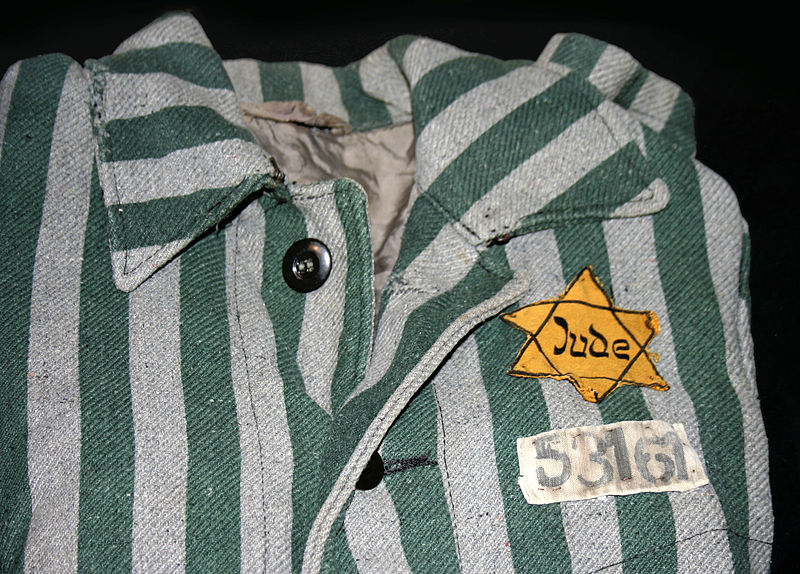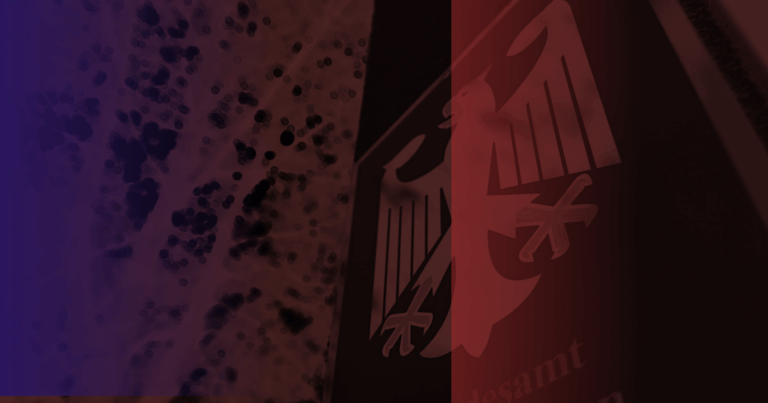It may seem logical to an international audience that antisemitism is a form of racism, but in Germany this fact is contested. For decades there has been an attempt here to establish a “non-racist” concept of antisemitism. In this article, I will argue why we can only understand antisemitism by seeing it as analagous to other forms of racism.
As with other forms of racism, antisemitism expresses itself in the form of hostility against a socially constructed group of people, who are ascribed certain fixed and ahistoric characteristics. As with other forms of racism, not all these characteristics are necessarily negative.
For example, compare the ideas “all Black people are good dancers / good in bed!”, or “all Asians are smart and hard working!” with the idea that “all Jews are clever / rich / powerful!”
Cultural racism
As with other forms of racism, a heterogeneous group of people is racialized – defined according to unspecific vague characteristics – and homogenized. As with other forms of racism, “race” here is and was an unscientific construct. As with other forms of racism, it is of no importance whether people are racialized according to biological features like the colour of their skin or are homogonized because of cultural features like religion.
People who are racialized as Black are not all part of the same “racial group”, nor even the same ethnicity. They are diverse people and groups of people who are spread across the world and grew up in quite different cultures and contexts. The colour of their skin is imprecise. What pigmentation or concentration of melanin do you need to qualify as “Black”?
“The vague biological definition of a Jewish “race” started to be replaced by the development of a cultural definition of Jewishness in the course of the 20th Century.” Are Jewish people “a nation” or an ethnicity (with many different cultures, languages, needs, traditions, nations etc.)? Are Jewish people a religious group? What about non-religious people with a Jewish background, who were also persecuted by the Nazi régime?
As with other forms of racism, antisemitism is an ideology of inequality. As with other forms of racism, antisemitism is based on the devaluation of a group of people. For example, Jewish people are primarily racialized as being “obsessed with power”, “greedy”, “cunning” and “without virtue”. They are constructed as a group with mainly negative characteristics.
Antisemitism and conspiracy theories
As with other forms of racism, it would be wrong to depoliticise antisemitism. As with other forms of racism, antisemitism is accompanied by real power relations, and not by those imagined in the heads of racists.
As with other forms of racism, antisemitism can be accompanied by conspiracy theories in society. But not all conspiracy theories are antisemitic. Not all conspiracy theories are somehow racist. But such connections exist because both conspiracy theories and racist ideologies project real social problems onto an abstract, poorly defined group.
As with other forms of racism, with antisemitism the racified can be construed as the “secret ruling elite”.
Look at anti-Chinese conspiracy theories of the “yellow peril”. [Leaning on] this theory, secret Covid-19 viruses were cultivated in laboratories. In addition, Chinese “collectivism” was developed for Chinese world domination. This means that Chinese people are obedient and without individualism and think and act like a one-dimensional ant hill, allowing them to threaten “the West” with the world wide subjugation to the Chinese.
Similarly, Barrack “HUSSEIN” Obama is portrayed as a secret Muslim who was destroying the USA from the inside, Angela Merkel in a headscarf is secretly planning the abolition of Christian holidays, strengthening Islam and carrying out a population exchange with Muslims. According to these theories, Muslims are carrying out a “Jihad in three phases”, in which – thanks to their skullduggery (“Taqiya!”) they can gradually infiltrate and subjugate Western society, etc.
Sometimes these anti-Chinese and anti-Muslim conspiracy theories are also accompanied by antisemitic theories. The population exchange is being planned by Jews, in order to “racially mix” and “stupify” Germans.
For many fascist groups, antisemitism has long served as a binding ideological element. “Anti-Muslim racism is slowly growing into a tendency of becoming the main object of the new right in Europe. This manifests itself in myths growing equivalent to the Jewish-Bolshevik world conspiracy theory, for example the French myth of Islamo-Gauchisme (Islamo-Leftism).
Jewish essentialism
Even if they aren’t a unique selling point, conspiracy theories and world-explanation ideologies have been nowhere more part of a comprehensive and persistent racist world vision as with antisemitism. But this is not because antisemitism is not a form of racism.
This conceptual framework of antisemitism is a product of a material and world-historic development in Europe. As with other forms of racism, Jewish victims of racialization are not to blame for this. As with other forms of racism, a racist ideology that can be convincing and popular requires a material fixed point in the real world.
Racist ideologies require a grain of truth, even if this is tiny. In the case of the Jewish-Bolshevist world conspiracy theory, this grain of truth was the large number of Jewish people were active in revolutionary socialist organisations and movements. This was not because of any conspiracy, but a result of the structural oppression of Jewish people and their fight for liberation. Many Jewish people saw their liberation in a movement that was committed to liberating all people.
Jews as a “trading class”
Natural living conditions forced historical groups of people like the Jews in and around Palestine to trade and to have relative regional autonomy. At other times the same factors also affected Armenians, Scots and many other groups pf people.
The corresponding historically determined special position of a Jewish trading class in European feudalism helps us understand the origins of antisemitism more closely. The relatively impenetrable feudal society and the ban on Jewish people acquiring land consolidated their existence as a trading class.
Jews in antique Palestine or those in feudal Europe who wanted to become or continue to be farmers, were only allowed to enter the production process if they received a Christian baptism, or later if they converted to Islam.
Jews in antique Palestine, or those in feudal Europe who wanted to become or continue to be peasants, received a Christian baptism eventually, or later converted to Islam in this position in the production process.
The remaining Jewish trading class now served the ruling feudal class in Europe as a sort of intermediary. The Jewish trading class thus appeared to the farming class to be a concrete class, which appeared to be materially above them and that in certain phases actually was.
The ruling class of the feudal nobility used the Jewish trading class as a scapegoat whenever farmers showed hatred of the unfair conditions. The economic basis was affirmed and consolidated on the level of ideological superstructure by the feudal nobility and church.
Post-feudal antisemitism
The anti-Jewish prejudices that developed here survived feudalism. Although Jewish people had already lost their economic special role during feudalism, prejudices were shaped by capitalist crisis, continued to vegetate and were radicalised.
In Marx’s words
“people make their own history, but they do not make it as they please; they do not make it under self-selected circumstances, but under circumstances existing already, given and transmitted from the past. The tradition of all dead generations weighs like a nightmare on the brains of the living. And just as they seem to be occupied with revolutionizing themselves and things, creating something that did not exist before, precisely in such epochs of revolutionary crisis they anxiously conjure up the spirits of the past to their service, borrowing from them names, battle slogans, and costumes in order to present this new scene in world history in time-honoured disguise and borrowed language.”
In dying feudalism in and crisis-ridden capitalism in its already developed imperialist stage, additional material developments played a role in the strengthening of antisemitism. Jewish people were pried put of the last pores of the dying trading class and streamed into the capitalism labour market. They began to enter the working class, the capitalist class and the intermediary classes.
For example, in trade, they came into competition with the rest of the petit bourgeoisie. As economic crisis hit, the accompanying impoverishment and danger of social relegation of a large part of the petit bourgeoisie exacerbated this competitive struggle to a struggle to the death.
Many counter-revolutionary fascist petit bourgeois movements, above all in Germany, thus shaped antisemitism. The ideology of the NSDAP emerged from a contradictory patchwork, in which the petit bourgeoisie was also pervaded by the countless contradictions of being a disappearing class between the classes.
Antisemitism offered a unifying element which was seeped in tradition. As part of their full fascist ideology, some fascist mass movements tried to extend antisemitism before and after taking power. The fascist dual state of the Nazis offered a particularly effective instrument for this.
Antisemitism today
These world-historic developments led to the shaping of the antisemitic ideology that we still experience today. This has modified its form through later developments, but the strategic thrust has not substantially changed.
Like other forms of racism, antisemitism can radicalise itself into an ideology of extermination. Anti-gypsy racism under the NS regime also led to the planned industrial mass extermination of Roma and Sinti. German colonialism also employed exterminatory racism against the Herero. General Lothar von Trotha issued unambiguous orders to exterminate in 1904. The German were able to obliterate 80% of the Herero by direct killings and concentration camps.
We must also recognise that specific forms of antisemitism can be historically explained, as can specific forms of all other types of racism. We do not have to settle for mystifying, idealist and religious sounding answers from the established bourgeois antisemitism research in Germany.
With antisemitism there are particular ideological characteristics of phenomena which also appear or can appear in other forms of racism. Constructed “unique selling points” and “fundamental differences” of antisemitism which can be used to separate it from other forms of racism do not exist.
Dogmatic reference to such differences does not come from an ingenious German-national analysis of antisemitism. On the contrary, this is based on a fully reduced and stunted understanding of racism as a whole.
Why does this matter?
Why is this question so important for the Left in German? This sort of misdirected analysis and definitions of antisemitism hinders a joint struggle of Jewish people, and other racified people on a practical level and isolates the German Left internationally. It can also lead to a moralistic super- and subordination of antisemitism on a theoretical level. It also practically depoliticises antisemitism and gets in the way of the fight against real antisemitism.
Antisemitism remains a complex phenomenon. But those in Germany who take up the cause of the “fight against all antisemitism” are unfortunately in most cases also those who have understood antisemitism the least. If we are unable to fundamentally analyse what antisemitism is and how it can emerge, we must also fail in the fight against antisemitism.
It is not the case that these German ideologies misunderstand racism, while understanding antisemitism brilliantly. They don’t understand all forms of racism – including antisemitism. This is a big problem.
A slightly longer version of this article first appeared in German on the freiheitsliebe website. Translation: Phil Butland. Reproduced with permission




